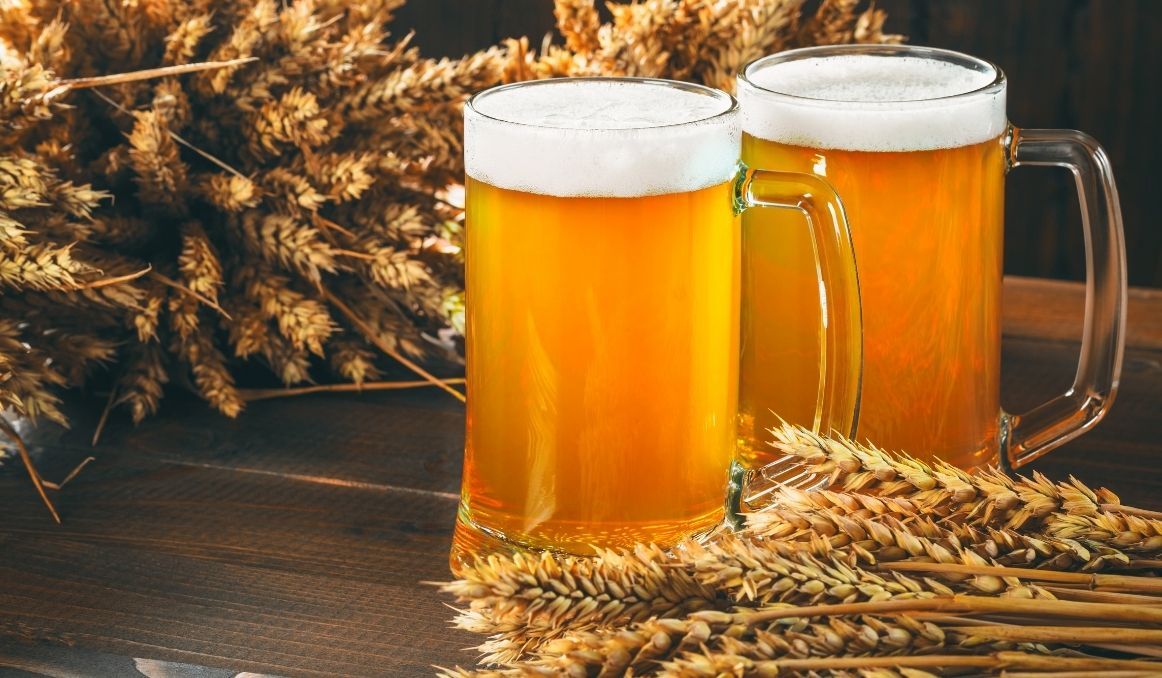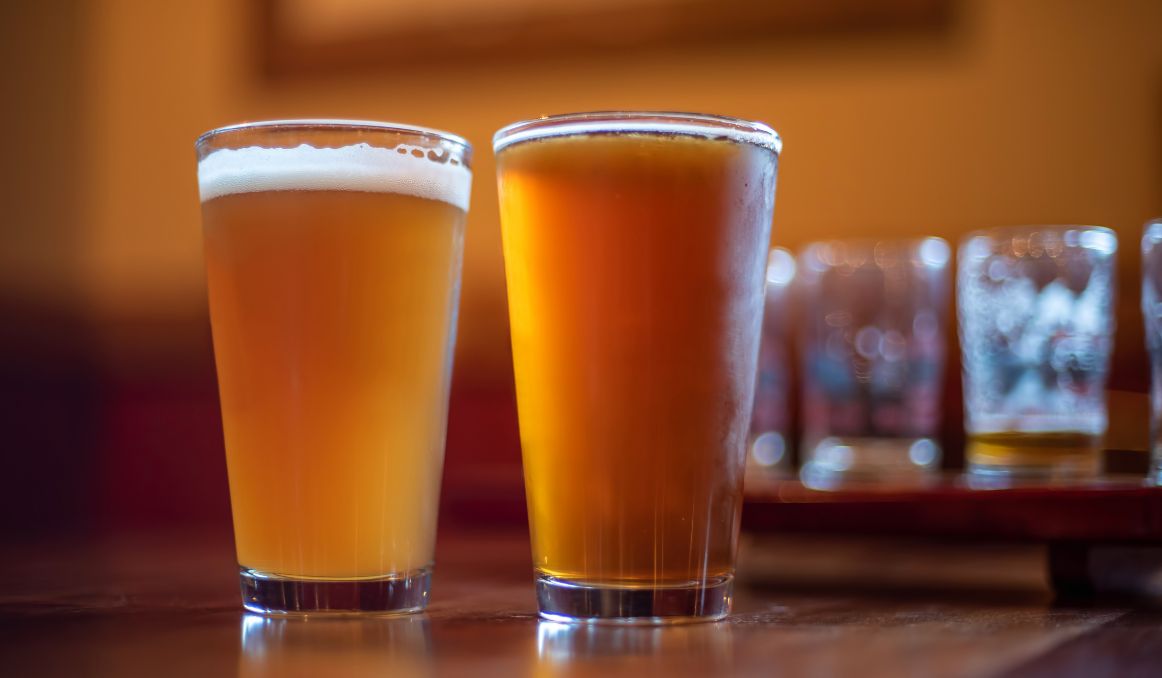What Causes Turbidity in Beer? Your Need-to-Know Guide
For those brewers and drinkers just wading into the hazy side of beer, it can be interesting to begin exploring the causes of that haze, also known as turbidity, in beer. While many people think turbidity just hit the beer scene with hazy IPAs, it is actually a phenomenon that has been around for as long as beer, only fading into history as demand for clarity grew.
Thus, the question “what causes turbidity in beer?” has a complex history to its fascinating answer.
Turbidity
Turbidity in liquid merely refers to suspended particles, or solid matter, in the liquid. In water, it can be minerals, and because the particles are so small, it takes them time to settle to the bottom of the container, so they make the liquid appear hazy.

What Is Turbidity in Water?
If you’ve ever drunk water from a well without a filter, you may have noticed the water seems cloudy or dense. That’s because the water is rich with the minerals from the soil. That cloudiness could also be caused by tiny air bubbles, surprisingly.
Either way, this is what we mean when we define turbidity.
What Cause Turbidity in Beer?
Turbidity in beer, however, is a different matter altogether.
Typically, turbidity in beer is caused by the yeast we add to create the alcohol content, to make it beer, basically.
Here’s what happens:
A grain, usually barley but also commonly wheat, is malted, which just means it is steeped, sprouted, and heated to bring the sugars out in the grain. The barley is then cracked or ground to provide better access to the sugars we brought out. Then the barley is boiled or steeped in filtered water to release those sugars into the water.
Finally, the yeast is added.
The yeast consumes the sugars in the water (now referred to as wort) and converts those sugars primarily to alcohol and carbon dioxide. The yeast is the major contributor to the flavor and aroma profile.
Most brewers, and many drinkers, know this much.
What many don’t know is that yeast is also responsible for about 450 other constituents in beer, from proteins and polyphenols to nucleic acids and polysaccharides.
And that’s where haze, or turbidity, comes in.
It can come from any one, and usually more than one, of these constituents, including from the yeast itself.
The History of Haze
In the last decade, hazy IPAs have become all the rage as brewers have begun experimenting with different strains of yeast, including wild yeast, that contribute greater turbidity to the beer.
For decades, wild yeast and experimentation with bacteria in beer was thought to be all bad, and haze was an instant signal that something was wrong with the beer.
Thanks to the rise of corporate breweries, the norm for the last century or so has been to have a filtered, crystal-clear beer. That clarity became a sign of quality and cleanliness.
But the reality could not be further from the truth.
Centuries of Turbidity

It is important to remember that beer is not naturally clear. Because of the naturally occurring proteins and other nutrients in barley or wheat, as well as the creation of so many other constituents by yeast, there are bound to be particles and sediment in beer even once it has been settled and strained or filtered.
Especially for the centuries that brewers were making beer with zero knowledge that yeast was even a factor in fermentation, knowledge that only became available a couple hundred years ago.
Before that, there was no expectation for a purely clean beer.
Indeed, families drank ales instead of water precisely because ale was cleaner than water thanks to the boiling and fermenting processes. No one was worried about a microbe here and there as the alcohol took care of most of that.
However, recognition of yeast led to the control of yeast, which coincided with industrialization and empire building. And now you have perfectly cold and clear beer in virtually every market across America.
Turbidity Is Not a Villain
Fortunately, with the rise of technology and the information age, we have been able to learn from each other, and we have come to realize the power and magic of blends, wild yeast strains, and hops.
All of which have brought turbidity back into the spotlight. Now we actually have competitions over who can make the most turbid beer!
Wheat beers, lambics, and Wit beer have always been hazy, due to yeast strains, and now we have IPA rushing to the game with various forms of hopping, primarily through dry hopping.
Where once it was forbidden to have hazy beer on the shelf, brewers are now brewing to ensure their beers maintain their haze throughout its shelf life.
How the tables have turned.
How to Check Your Turbidity
Whether you have turbidity in your beer due to some leftover byproduct of yeast or from additives like hops, your overriding goal is to make it the same way every single time. That’s how you get and keep a loyal fanbase.
Why?
Consistency is key to all great beer production, so whether you want a super hazy beer or a crystal-clear beer, you want to be clear on how it got that way and then deliver on that same appearance, flavor, and aroma each time your customer orders your beer.
The trick to maintaining consistency is to measure your turbidity and understand the process that got you there.
The right equipment can help you maintain that consistency in either haziness or clarity, and that equipment does not have to cost you an arm and a leg or be complicated to use.
Check your turbidity, keep your beer consistent, and grow your fanbase.
Cheers!
Passionate about the beer and/or wine making process? So are we! If you’re interested in finding out how you can use our technology to control fermentation and monitor your yeast, save work hours and improve the cost-efficiency of your business, drop us a line at [email protected] or check out our product pages:
- Oculyze BB 2.0 (Better Brewing) Yeast Cell Counter App + Hardware
- Oculyze FW (Fermentation Wine) Yeast Cell Counter App + Hardware
Also, you can now get access to a fully functional demo account to test our Web App. Completely free of charge and with no commitment to purchase.
Sources:


